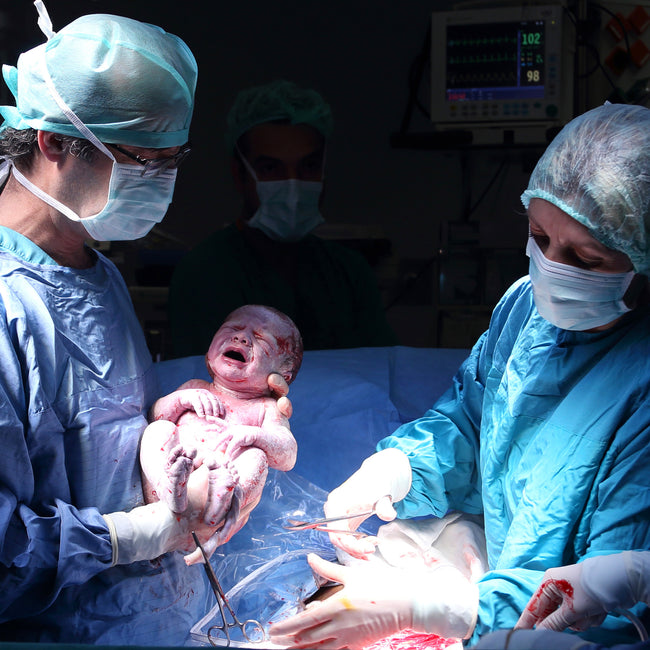
Around 25% of babies in the UK are born via caesarean section (C-section), of those approximately half will be planned and half will be unplanned.
Every UK NHS Trust publishes their own monthly birth stats, including C-Section rates. The most quoted rate amongst UK Trusts is approximately 25%, however, we would recommend that you check your own local trust’s rate as it could vary significantly from this average.
In this article we will cover:
- Why C-sections are performed
- What is an elective or planned C-section
- What is an emergency or unplanned C-section
- What happens during a C-section
- Recovering from a C-section
- Possible risks of having a C-section
- Vaginal birth after a C-section (VBAC)
- Frequently asked questions regarding C-sections
There are many reasons why you may choose or be recommended that your baby is born via caesarean section:
- Medical reasons – in most cases, elective (planned) and emergency (unplanned) C-sections are performed for medical reasons
- Personal preference – women may choose to have a planned and, occasionally, an unplanned C-section due to personal reasons
- Psychological factors – valid reasons for wanting or needing a C-section

Elective C-sections are planned ahead of time (usually at 39 weeks of pregnancy) – having been discussed, booked (given a date) and consented to well in advance of the procedure - and, as we’ve just mentioned, may be chosen by or recommended to the mother for medical, personal, or sometimes psychological reasons.
Reasons why you may choose or be recommended to have a scheduled C-section:
- You are carrying twins, triplets, or more babies
- Your placenta is covering the os (the opening via which your baby would exit your womb) known as placenta praevia
- You’ve had a/several previous C-section/s
- You’ve had a previous traumatic birth
- Your baby may have a condition that makes going through labour and a vaginal birth risky
- You may have underlying conditions, such as high blood pressure, which can put your health at risk if you undergo labour and pushing.
- Previous life experiences may make the thought of a vaginal birth very difficult for you
Read here if you’d like to know what to expect during a planned C-section.
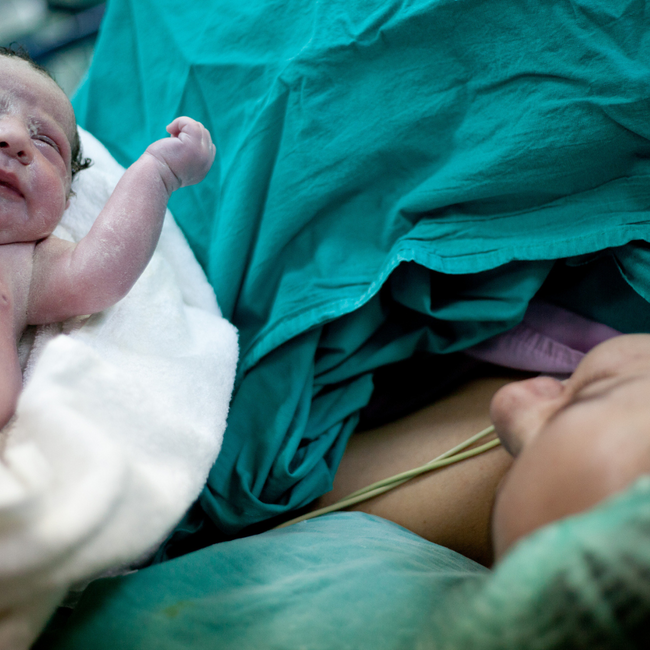
An emergency or unplanned C-section is a Caesarean section that has not been planned by you and your obstetrician (doctor) during your pregnancy. It happens because it is considered the safest way to birth your baby according to your circumstances.
Reasons why you may require an emergency C-section:
- Being booked for an elective C-section and your waters breaking and/or going into early labour
- Compromise to your health - for example, in the case of severe pre-eclampsia or other conditions
- Compromise to your baby’s wellbeing – for instance, if there are signs that your baby may be distressed (before or during labour)
- Heavy bleeding from your vagina
- Cord prolapse (where your baby’s cord slips down before baby after your waters break)
- A failed induction of labour – where the process of induction does not get you into labour
- Labour not progressing, with or without compromise to your or your baby’s wellbeing.
- Malpresentation of your baby during labour – where it is not your baby’s head presenting, but their feet, bottom or another part of their body. This does not always require a birth by C-section, but your individual circumstances and wishes may determine it best.
- Failed instrumental delivery – where there is a failed attempt to assist to deliver your baby with forceps or a ventouse
Read here to understand what happens during an emergency section and why you may need one.
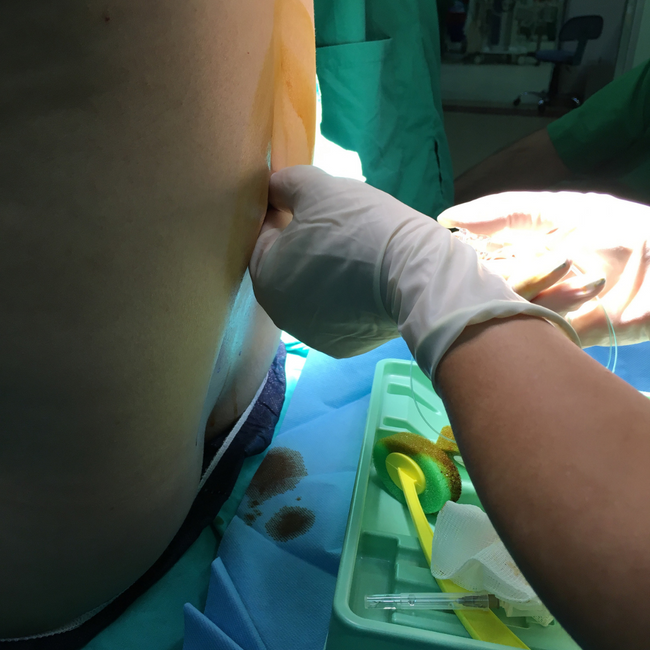
A C-section is major abdominal surgery that is performed in theatre and, like any operation, it involves several steps:
1. Discussion with your obstetrician
2. Reading and signing of the consent form. In some rare emergency cases, verbal consent may be enough
3.Pre-op assessment - for planned C-sections. This includes blood tests to check your blood group and iron levels
4. Making sure you are pain-free for the operation - most commonly, by having a spinal anaesthetic
5. In theatre:
- An incision is made at your bikini line after you’ve been cleaned and draped
- Your abdominal muscles are parted and another incision is made into your uterus, after which your baby is born
- Closing the wound - which can take considerably long, as there are several layers to stitch
6. Recovery area, where you’ll stay approximately 1-2 hours before you are transferred to the postnatal ward.
We have articles that focus on what happens during a planned C-section and how an emergency C-section may be different.
C-section birth is major abdominal surgery, and recovery time can vary from one woman to another. Your abdominal muscles that have supported your growing womb, which your pregnancy may already have weakened, can feel quite sore and tissues cut during the surgery have been stitched back together and need time to heal.
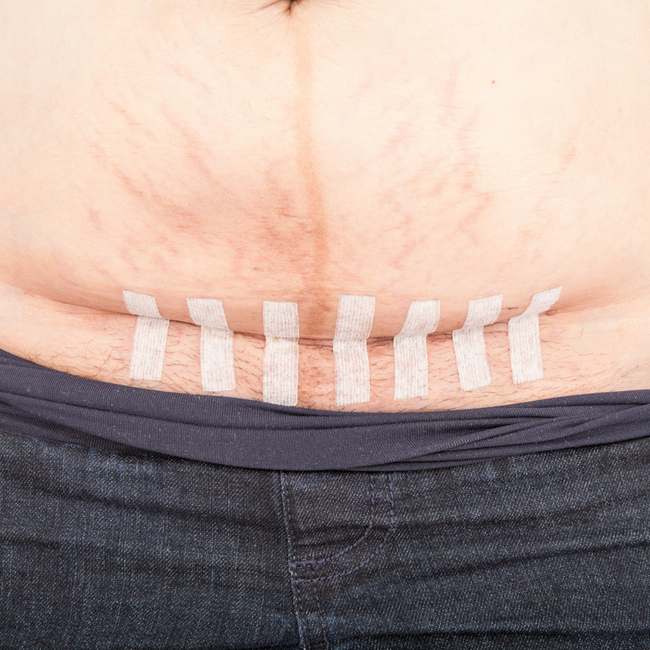
After your C-section, you will need to care when moving about and lifting things. Rest and nourishment are key to recovery and the healing process. Ensure you are eating healthy, nutrient dense foods and try to arrange for help with normal day to day things by asking your partner, family, older children, friends or hired help for extra assistance with daily chores, food prep and general life.
C-sections are associated with more risks than vaginal births as they are major surgical procedures which require regional or, on occasions, general anaesthesia.
Here are some of the risks associated with having a C-section:”
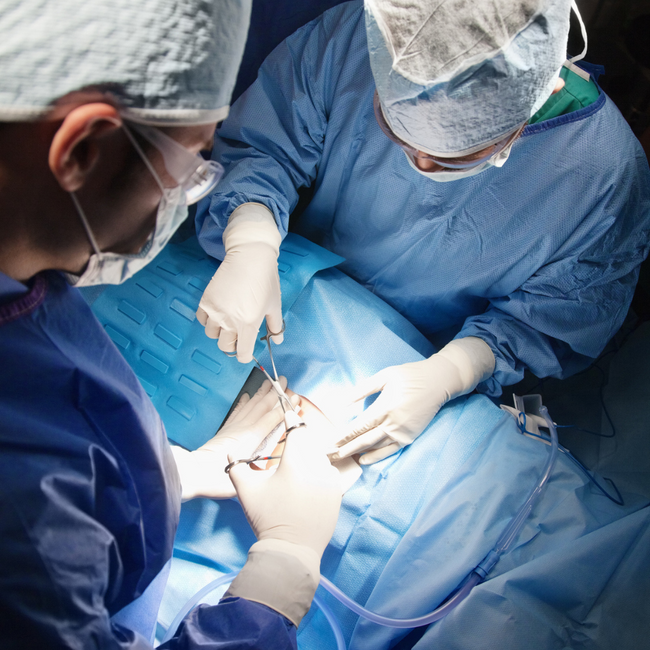
Here are some of the risk factors associated with having a C-section:
- Wound infections - signs of infection include pain, swelling, discharge from the wound site, and, more seriously, sepsis.
- Blood loss - more than is usual during birth (haemorrhage). You may need further surgery, iron tablets or a blood transfusion.
- Blood clots (deep vein thrombosis- DVT) - often in the leg, causing pain. Doctors can recommend injections to prevent this after a C-section.
- Damage to your bladder or bowel - this could happen during the surgery but is a rare complication.
- Higher risk of complications in future pregnancies and births - such as problems with the placenta and higher risk of stillbirth.
- Risk to the baby - small risk of the baby being cut during the procedure and a risk of breathing problems as they have not undergone a vaginal birth which helps reduce fluid in their lungs.
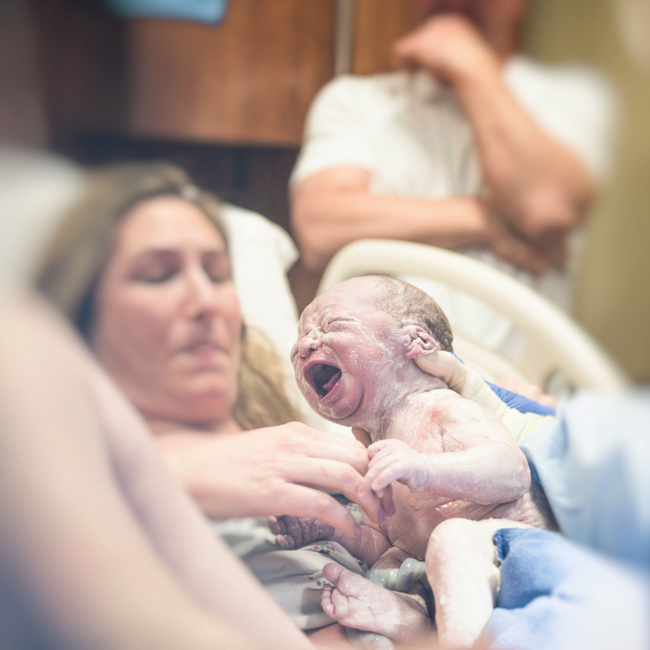
VBAC (vaginal birth after C-section) is when a woman has a baby by vaginal delivery after an emergency or elective (planned) C-section.
Provided there are no other medical complications with you or your baby; it is much safer to plan for a vaginal birth even if you have had more than one C-section previously.
C-sections carry a higher risk of increased blood loss and infection rates than vaginal births and increase the chances of having problems with your placenta in any future pregnancies.
For some women, a desire to give birth vaginally is powerful after a C-section, as they may have been disappointed that their baby needed to be born by this method. Other women may need to work through feelings surrounding their previous caesarean, as it may have caused some trauma or upset.
Read more: What is VBAC?
How can I reduce the risk of needing an emergency C-section?
- Avoid any type of induction of labour unless there is evidence to suggest you or your baby are at risk of prolonging your pregnancy. Labour that starts naturally is less likely to need medical intervention.
- Prepare well for your birth. Your hormones will work better if you labour in the place you feel safest and most comfortable, so think carefully about where you would like to labour and give birth- home, birth centre or hospital.
- Make a birth plan and discuss this with your birth partner, so they know your wishes and can help advocate for you in labour.
- Think about how you would like your baby’s heart rate monitored in labour, as different methods can impact your mobility. You can discuss the advantages and disadvantages of different monitoring with your midwife.
- Try to remain as upright and active as possible in labour.
- Although an epidural can offer effective pain relief, it will restrict your movement, making it more difficult for you to widen your pelvis for birth and increase your need for assistance with forceps or ventouse. Consider an epidural if there is a medical need or after you have tried other types of pain management.
- Consider taking a hypnobirthing course. This can help you to develop coping strategies for your labour and birth.
How many C-sections can you have?
You can have as many C-sections as you want, but the risks for future pregnancies and surgeries will increase the more C-sections you have. Repeat C-sections create scar tissue and internal adhesions each time, which can impact future pregnancies and create difficulties for surgeons.
Is a C-section painful?
A C-section is major abdominal surgery. After this surgery, you will need to care for your newborn baby. There is usually moderate pain at the wound site, and you will probably need pain relief such as paracetamol or ibuprofen. It is important not to do too much, accept help when needed and optimise healing by eating well and keeping hydrated.






